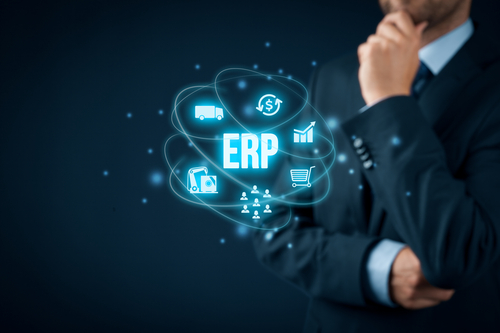Vendor Management – An Essential Guide for SMEs
Vendor management is a set of tools that companies use to ensure profitable and efficient relationships with their suppliers. Coming a long way from traditional phone calls, faxes, and emails, today even small businesses have started to utilize software to manage their communication with vendors.

You can also listen to this article:
What is Vendor Management?
Vendor management (or supplier management) is an umbrella term for the processes a company uses to select and evaluate its suppliers, keep procurement costs under control, reduce supply chain risks, and make sure that materials and goods arrive in a timely manner.
It is a tool that allows staff members within the company to structure vendor relationships so that they meet specific criteria identified as critical for the company’s interests. It is an important driver of service excellence while helping companies manage risks better.
Vendor Relationships
Without solid vendor relationships, companies would not be able to complete orders. Traditionally, vendor relationships were verbal, with many phones, faxes, or emails to convey information. Changes and adjustments were also made via these communication methods.
But this form of relationship has several drawbacks. They are not real-time, meaning disruptions could catch a company’s purchasing team off guard, threatening on-time order status or stoppage. They were also not transparent. Agreements made without automated tracking and records were not always known within an enterprise, and miscommunication was common.
ERP/MRP software eliminates these issues by automating vendor relationships. Any staff with access to the software can see agreements and purchase strategies, and with near real-time data available, disruptions are less likely to have as significant an impact.
Criteria to consider for Vendor Management
Some attributes of vendor management criteria include:
- Vendor Selection/Validation – Standard operating procedures should be in place to validate vendors. The criteria can be internally defined to fit the needs of the company. Some considerations for vendor validation include credit history, commitment to sustainability, commitments to appropriate age workers and ethics, and references from those who have used the vendor in the past.
- Pricing Strategies – Managing vendors means incorporating pricing strategies into negotiations. Suppose a company is committed to large volume or bulk purchases or is willing to operate off blanket orders. In this case, vendors can provide better pricing than to smaller clients. The raw material pricing can be included in the MRP Bill of Materials (BOM) where it will drive cost from start to finish reliably for the manufacturer. It also provides companies with the means of automating the monitoring of price changes that could affect costs. When acceptable, these changes automate throughout the BOM to provide the most accurate costing dynamically. It can also serve as a monitor to prevent unnecessary prices changes, pricing errors from the vendor, or changes that were not agreed upon within the originating contract.
- Establishing Backup Sourcing – With today’s unprecedented level of supply chain disruptions from COVID-19, trade wars, weather events, and more, all types of companies should include backup vendors that are given at least some percentage of material purchases to keep them in the loop. This may also include nearshoring or reshoring strategies where companies move away from traditional vendor sources to bring them closer to production and distribution to mitigate disruptive events. To deal with recent disruptions, many companies have taken a tiered approach with a percentage coming from several vendors in different locations. An ERP/MRP system with a built-in procurement software allows to monitor and analyze pricing, delivery, and other vendor performance variables.
- Evaluating Vendor Quality – Today, quality is more important than ever. It should include traditional aspects for raw materials and finished goods such as purity, reliable performance characteristics, or parts made to specification. But it also provides transparency for materials with expiration dates, high degrees of compliance regulation, and more. For some vendor items such as motors, harnesses, electronics, etc., today’s ERP/MRP software can even track engineering changes, product specification changes, and other adjustments to part or material performance that can be tied to the routings and BOMs and are accessible by system users. This cloud-based system eliminates manual tracking of those variables ensuring improved quality.
- Evaluating Overall Vendor Performance – Most ERP/MRP systems today have functionality for vendor performance scores. By tracking actual versus expected performance, companies can work with existing vendors to improve their performance. If the vendor cannot improve past a certain point, the company can use the performance history as a catalyst to change to a more reliable vendor. Supplier performance management can also be used to negotiate pricing contracts or lead time expectations.
- Protocols for Accounts Payable – MRP systems also help automate financial transactions for payment of raw materials. This increases transparency and ensures that manufacturers do not lose track of what is owed and jeopardize materials delivery.
Developing vendor management criteria that are intricately tied to the functionality of a software system reduces human error. It also means that data is accurate and current and based on real-world applications that take the guesswork and biased human analysis out of the system.
Benefits of Vendor Management
With the proper criteria in place, manufacturing companies can realize several benefits to their operation, including:
- Cost Saving – Of course, all companies seek to lower costs. But vendor management is more than the lowest cost purchasing. With today’s supply chain challenges, practices such as nearshoring, reshoring, transportation, and logistics put upward pressure on costs. The use of ERP/MRP software can also reduce labor costs from tasks such as data entry, report aggregating, and more. With the right vendor and with transparency managed and analyzed by the software’s analytics functionality, vendor relationships can be negotiated to capture the best volume price, leverage shipping and transportation costs, and shorten lead times.
- Strong Long-Term Partnerships – In the face of disruption, vendor relationships are key. As world manufacturers saw unprecedented shortages during the COVID-19 pandemic, long-term partnerships can help ensure that vendors first service their most significant, best paying, and most logical customers. Strong long-term partnerships can mitigate disruption and forge a mentality that suppliers and producers are “in it together.” The increased transparency that manufacturing companies and their vendors realize with an ERP/MRP system can help forge stronger partnerships over time.
- Purchasing Efficiencies– Vendor management allows for greater purchasing efficiency through tools such as Economic Order Quantity, enabling companies to take advantage of the optimum cost per volume for the required production. It also allows companies to consider consolidating vendors to further leverage volume pricing strategies.
- Improved Contract Management – With a cloud-based ERP/MRP system, data, information, and analytics are available to allow companies to negotiate better contract terms. Because the data is a true reflection of performance and near real-time in its timeframe, contracts can be crafted to allow flexibility and to reflect more accurate purchasing. And the software always has the most recent contract terms applied across its functionality as well as historical progression of contracts for analytical use in setting long-term strategy.
- Operational Efficiencies – All the aforementioned benefits combine to create improved operational efficiencies. BOMs have proper routings and BOM exploded line items are correct in cost and tied to actual purchase receipts. Production schedules and work centers can reflect on-hand and where-used inventory accurately. ERP/MRP systems also offer robust reporting to allow managers the most accurate and up-to-date information for making decisions. These factors combine to allow manufacturing staff, planners, managers, and executives to stop focusing on time consuming tasks. Instead, they can use their skill and experience to develop tactical and strategic moves that improve competitiveness and process improvements that improve efficiency and lower costs.
Vendor management software is essential for overall operations. And controlling the receipt, Work-in-Process, and outbound flow of inventory offers opportunities for higher profit margins, better operational performance, and reduced cost. And when used in conjunction with a robust, best-in-class ERP/MRP system, it can open all these benefits to any company to improve their performance and create a workable, accurate, and agile inventory control system with achievable production schedules and on-time delivery.
Key takeaways
- Vendor management (or supplier management) is an umbrella term for the processes a company uses to select and evaluate their suppliers, keep procurement costs under control, reduce supply chain risks, and make sure that materials and goods arrive in a timely manner.
- Traditionally, vendor relationships were verbal, with many phones, faxes, or emails to convey information. Nowadays, companies are using ERP/MRP software that automates many tasks related to supplier management.
- Vendor management consists of many different parts. These include vendor sourcing and evaluation, creating a pricing strategy, negotiating with backup suppliers, performing quality inspections, assessing supplier performance, and ensuring that financial transactions are made in time and kept track of.
- Vendor management can provide companies with benefits such as cost savings, stronger partnerships, improved purchasing efficiency, better contract terms, and higher overall operational efficiency.
- When used in conjunction with a robust, best-in-class ERP/MRP system, it can open all these benefits to any company to improve their performance and create a workable, accurate, and agile inventory control system with achievable production schedules and on-time delivery.
You may also like: Materials Management – Best Practices for Small Manufacturers




